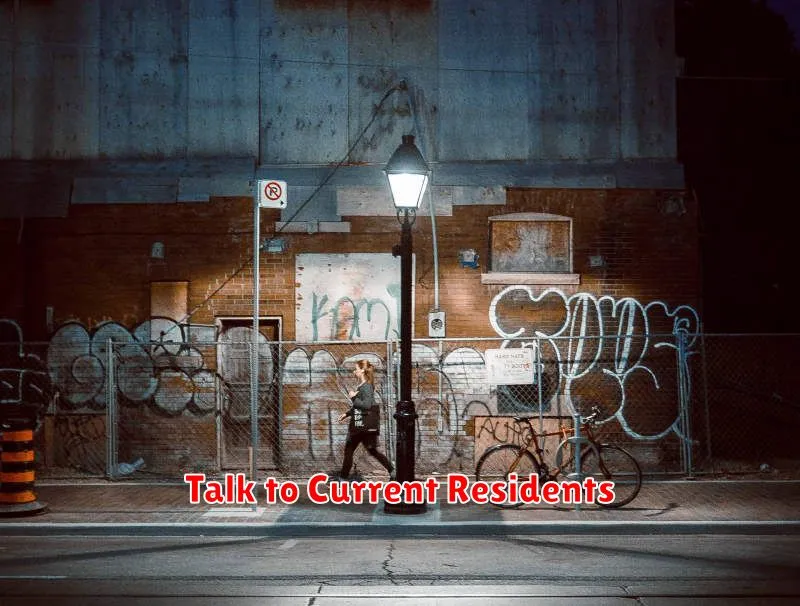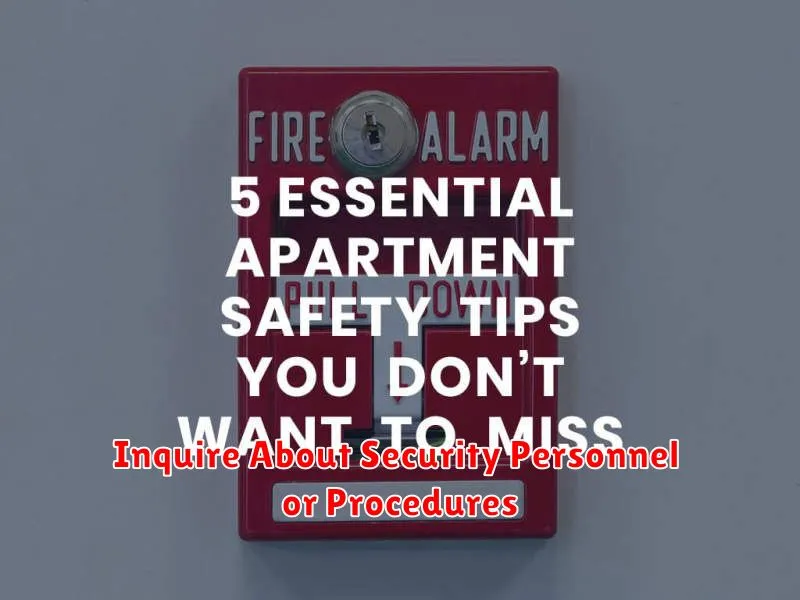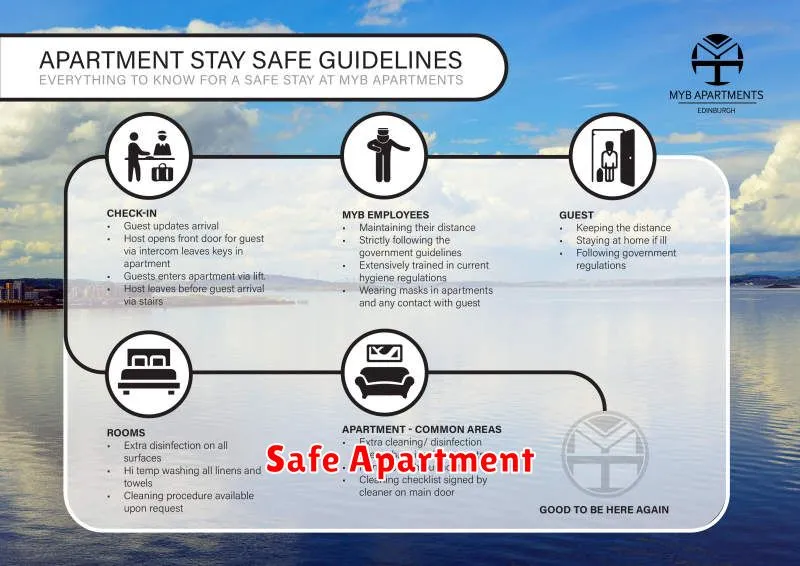Moving to a new city can be an exciting experience, but it also comes with its fair share of challenges, especially when it comes to finding a safe and comfortable apartment. Urban areas, while vibrant and full of opportunities, can also pose safety concerns. This is why it’s crucial to take the necessary steps to ensure you’re living in a secure environment. This article will guide you through the process of finding a safe apartment in an urban area, equipping you with the knowledge and resources needed to make informed decisions and avoid potential risks.
Research Neighborhood Crime Statistics
One of the most important steps in finding a safe apartment in an urban area is to research neighborhood crime statistics. This information can give you a clear picture of the safety risks in different areas, helping you make an informed decision about where to live. You can find this information from a variety of sources, including:
Police Department Websites: Most police departments have websites that provide crime statistics by neighborhood or district. This data is often broken down by crime type, making it easy to identify areas with high rates of specific crimes.
Neighborhood Watch Groups: Local neighborhood watch groups can be valuable sources of information about crime in the area. They often have crime logs and statistics available to the public, and they may be able to provide insights into the types of crimes that are most common in the area.
Community Websites: Websites like Nextdoor and Citizen can provide a platform for residents to share information about crime in their neighborhoods. These sites can be a good source of real-time information about recent incidents and overall safety concerns.
Real Estate Websites: Many real estate websites include crime statistics for neighborhoods. These statistics can be a helpful starting point for your research, but it’s important to verify the information with other sources.
When researching crime statistics, it’s important to consider the following factors:
Time Period: Make sure to look at crime statistics for a reasonable time period, such as the past year or two, to get a sense of the current crime trends.
Crime Type: Different types of crimes have different levels of impact on safety. For example, property crimes like theft are generally less serious than violent crimes like assault.
Context: It’s important to consider the context of the crime statistics. For example, a high crime rate in a particular neighborhood might be due to a specific event or factor that is no longer present.
By researching neighborhood crime statistics, you can gain valuable insights into the safety of different areas and make an informed decision about where to live.
Look for Security Features in the Building
Living in an urban area can be exciting, but it also comes with the need to be vigilant about your safety. When looking for an apartment, it’s crucial to consider the security features of the building. Here’s a checklist of things to look for:
Entryways: Are the main entryways well-lit and secure? Do they have intercom systems, security cameras, or other access control mechanisms? A secure entryway acts as the first line of defense against unauthorized entry.
Building Security: Does the building have a security guard or a security system? Are there any additional security measures like doorman, monitored alarms, or regular patrols? Having a dedicated security presence can significantly enhance safety.
Lighting: Is the building and the surrounding area well-lit? Adequate lighting is essential to deter crime and ensure visibility for residents. Poor lighting can create hiding spots for potential criminals and make residents feel unsafe.
Access Control: Look for buildings that have controlled access systems. This can include key card access to the building, elevators, and even individual apartments. Controlled access limits access to residents and authorized visitors, creating a more secure environment.
Neighborhood: Consider the overall safety of the neighborhood. Are there any crime statistics available? Are there visible signs of neighborhood watch programs or community involvement? While the building itself is important, understanding the surrounding area is crucial for safety.
Don’t hesitate to ask questions about security features during your apartment search. A building’s security measures can significantly impact your safety and peace of mind while living in an urban area.
Check for Well-Lit Areas
When you’re looking for a safe apartment in an urban area, lighting is a crucial factor to consider. Well-lit areas deter crime, making them safer for residents. Look for apartments with streetlights directly in front of the building, well-lit hallways, and security cameras in common areas. Avoid apartments located in dark, isolated corners or those with poorly lit parking lots. Good lighting helps create a sense of visibility and discourages potential criminals from targeting your building.
Consider Proximity to Emergency Services
When choosing an apartment in an urban area, it’s crucial to consider the proximity to emergency services. This includes fire stations, hospitals, and police stations. Being close to these vital services can significantly impact your safety and well-being in case of emergencies.
Proximity to a hospital is especially important in case of medical emergencies. A short commute to a hospital can mean the difference between life and death. Additionally, living near a fire station can reduce the response time in case of a fire, while proximity to a police station can offer a sense of security and faster response times in case of a crime.
Consider using online mapping tools to identify the locations of these services in relation to potential apartments. You can also inquire with building management or local residents about the responsiveness of emergency services in the area.
Talk to Current Residents

One of the best ways to get a feel for the safety of an apartment building or neighborhood is to talk to current residents. They can provide valuable insights into the area’s safety, crime rates, and the building’s security measures. You can ask about their experiences, any concerns they have, and whether they feel safe living there.
Don’t be afraid to ask residents about specific incidents or if they’ve ever felt unsafe. Be respectful and avoid making assumptions about their experiences. You can also ask about their opinions on the building’s management, maintenance, and security measures.
Getting firsthand accounts from current residents can give you a more realistic understanding of the safety of the apartment and its surroundings than any online review or website can. It’s a valuable tool in your search for a safe and comfortable living environment.
Visit the Apartment at Different Times of Day
Visiting the apartment at different times of day can provide valuable insight into the neighborhood’s safety. A seemingly quiet street during the day could be a hotbed of activity at night. Take a walk around the area at various times, especially after dark, to get a feel for the ambiance and observe the local residents and any unusual activity.
Pay attention to the following:
- Street lighting: Is the area well-lit, or are there dark spots that could attract unwanted attention?
- Noise levels: Is the neighborhood noisy or peaceful? Excessive noise can be a sign of high crime rates.
- Foot traffic: Is there a steady flow of people, or does the area seem deserted? A lack of pedestrian activity can be a red flag.
- Loitering: Are there groups of people loitering around, or is the area generally safe and clean?
By visiting the apartment at different times of day, you can gain a more comprehensive understanding of the surrounding area and identify any potential safety concerns.
Utilize Online Safety Resources
Before you even start looking at apartments, take advantage of the wealth of information available online. Websites like NeighborhoodScout and SpotCrime can provide detailed crime statistics for specific neighborhoods. These resources can help you identify areas with lower crime rates, giving you a better starting point for your search.
Furthermore, leverage online forums and community groups to gather insights from residents. Sites like Nextdoor and Reddit often have threads dedicated to specific neighborhoods, where locals share their experiences and safety concerns. This firsthand information can be invaluable in determining the overall safety of an area.
Remember to always be cautious when using online resources. Verify information from multiple sources and be wary of biased reviews. It’s also wise to avoid sharing personal details online, as this can make you vulnerable to scams or harassment.
Trust Your Instincts

Finding a safe apartment in an urban area can be a daunting task. There are so many things to consider, from the neighborhood to the building itself. But one of the most important things to trust is your gut feeling. If something doesn’t feel right, it probably isn’t.
For example, if you’re touring an apartment and the landlord seems evasive or doesn’t answer your questions directly, that’s a red flag. Or if you see a lot of graffiti or trash in the neighborhood, that could be a sign that the area isn’t safe.
Of course, it’s important to be realistic. Not every neighborhood in an urban area is going to be perfect. But if you trust your instincts, you’ll be able to avoid some potentially dangerous situations.
It’s also important to remember that you’re not the only one who has a gut feeling. If you’re talking to friends or family about your apartment search and they have concerns about a particular building or neighborhood, listen to them. They might be able to see things that you’re missing.
Ultimately, the decision of whether or not to rent an apartment is up to you. But if you trust your instincts, you’ll be able to find a safe and comfortable place to live.
Check for Secure Entry Points
One of the most important factors to consider when choosing an apartment in an urban area is security. You want to make sure that your apartment building and unit have adequate security measures in place to protect you and your belongings. A crucial aspect of this is examining the entry points to the building and your apartment unit.
When evaluating entry points, it’s essential to consider the following aspects:
- Building Entrances: Do the main entrances have secure doors with locks and a robust entry system? Look for features like intercoms, video surveillance, and key card access systems.
- Apartment Doors: Check if the apartment doors are solid and equipped with high-quality locks, preferably deadbolts. Ensure they are properly installed and that there are no visible signs of tampering or damage.
- Windows: Assess the security of the windows. Are they double-paned, equipped with strong locks, and difficult to break? Ensure the windows are not easily accessible from the outside.
- Lighting: Pay attention to the lighting around the entry points. Adequate lighting can deter potential intruders and improve visibility.
- Neighborhood Safety: Even if the building itself has excellent security, it’s essential to consider the overall safety of the neighborhood. Observe the street, surrounding buildings, and pedestrian traffic during different times of the day.
By carefully evaluating these aspects, you can ensure that the chosen apartment building and unit have secure entry points, minimizing the risk of unwanted intrusion and providing you with a safe and comfortable living environment.
Inquire About Security Personnel or Procedures

When looking for a safe apartment in an urban area, it’s crucial to understand the security measures in place. You should inquire about the building’s security personnel and procedures. This includes asking about the presence of security guards, surveillance cameras, and any other safety measures implemented.
Learn about the types of security personnel present, such as on-site guards or remote monitoring services. Ask about their shift schedules and whether they conduct regular patrols.
It’s also vital to inquire about the building’s security protocols. This includes how access is controlled, whether key fobs or security codes are used, and the procedures for reporting suspicious activity.
Remember to evaluate the security measures based on your individual safety concerns. If you have specific worries, don’t hesitate to ask detailed questions to ensure your peace of mind.

